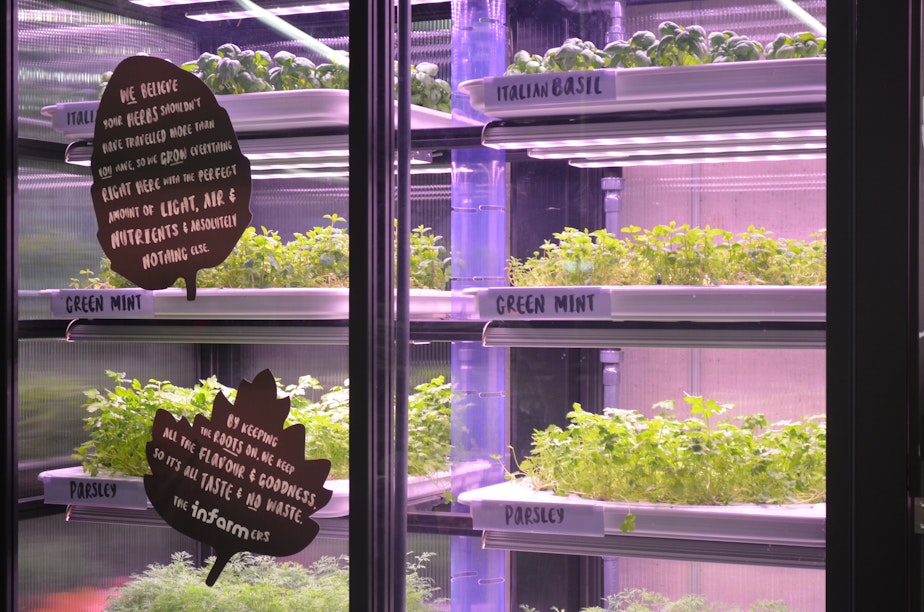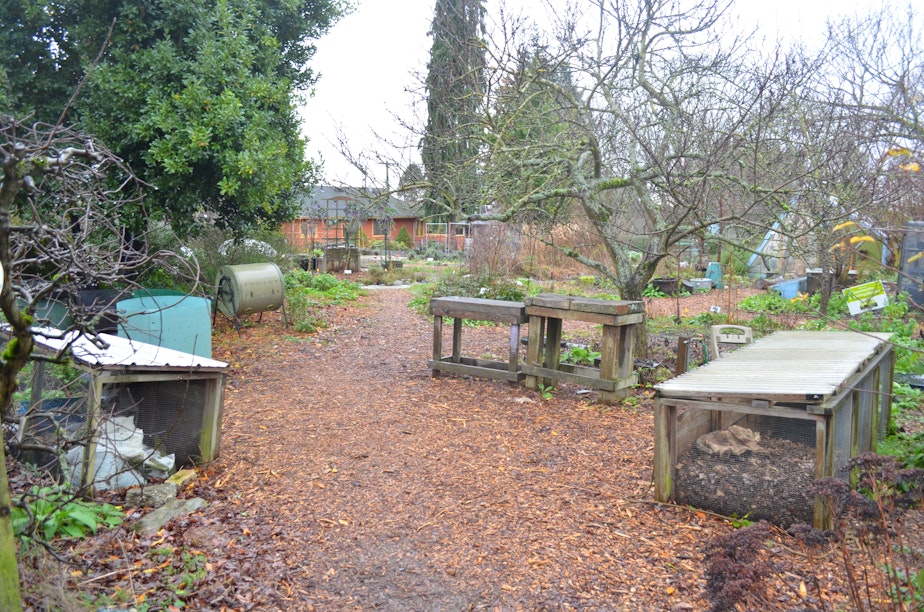Vertical farming tries to bring crops to urban consumers in Seattle region
In a Kirkland QFC, herbs and greens are growing inside what looks like a big refrigerator lit with soft purple light.
On a rainy Saturday afternoon in late February, Shae Stanley handed out samples.
“Love cilantro,” said customer Rhonda White, trying a cracker with cream cheese, tomato, and cilantro. “You either love it or hate it.”
The purple-lit case is a vertical farm, where plants grow using energy from LED lights. A Berlin-based startup placed this vertical farm and one other in Seattle-area QFCs just before Thanksgiving, and more are on the way: QFC plans to expand vertical farming to all its Pacific Northwest stores.
But critics say this way of farming has a long way to go before it could become a major part of the food supply.
“Typically food is shipped thousands of miles or hundreds of miles from where it’s grown,” said Emmanuel Evita, a spokesperson for InFarm.
Sponsored
Not so with vertical farms: These farms can grow food steps from where consumers buy it.
“I think that’s one approach to helping solve some of these ecological challenges that are presented by our food system,” Evita said.
He’s not talking just about transportation.
“We use no chemical pesticides,” he said. “We’re able to use 95 percent less water than industrial farming. We use 75 percent less fertilizers than industrial farming.”

Sponsored
InFarm has vertical farms in grocery stores and restaurants in seven countries. These two Seattle-area farms are its first in the US.
InFarm employees maintain the farms, and QFC buys the produce the way it would from any farmer. But not everyone’s sold on the idea.
“It’s kind of supermarket theater, or marketing for the supermarket,” said Neil Mattson, a professor at Cornell University who studies vertical farming.
“It’s probably not going to be the way that the majority of Americans get their fruits and vegetables,” he said. “I would just question whether it’s scalable.”
Sponsored
Mattson said vertical farming doesn’t actually have all the environmental benefits some proponents claim.
“While we do reduce the transportation cost, we do have increased costs for lighting and for controlling … the temperature and humidity in the growing space,” he explained. “And so, in the case of New York City, for example, it turns out that we had about twice the carbon footprint for growing lettuce vertically as compared to in a field in California and trucking 3000 miles.”
Profitability is a question as well. A Jeff Bezos-backed startup recently canceled its plans to open a large vertical farming facility in Kent. InFarm declined to comment about its profitability, and QFC did not respond to KUOW’s many interview requests.

Sponsored
Another way to grow food in cities is outside, in dirt.
Melissa Spear is the executive director of the Tilth Alliance, a non-profit that advocates for healthy food and organic farming and gardening. She showed off everything that’s growing at Tilth’s urban farm in Seattle’s Wallingford neighborhood: berries, raspberries, persimmon trees, and more.
Traditional urban farms like this one “provide a lot of ecosystem services in terms of stormwater runoff, in terms of climate change,” she said. That said, she does see a place for vertical farming as well, to shield some food from climate-related threats.
“Bringing food inside may protect the food production from ... threats such as drought or significant storm events,” she explained.
But, Spear added, we should be realistic about the limitations of this technology.
Sponsored
“Vertical farming will never replace our traditional large-scale farms,” she said. “It’s impossible.”
“So they will just be adding some food to the food supply in cities.”




